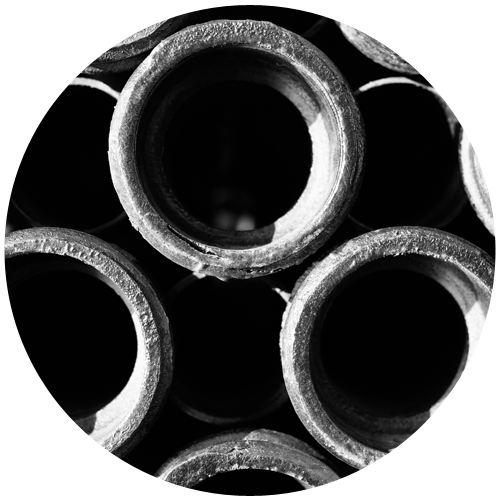Cast iron lasts for decades, even centuries. It’s environmentally friendly and sustainable. It can be recycled without losing its properties or any of its quality.

So where do you find this eternal metal?
Cast iron is used for
- Making pipes
- Making machines
- Automotive parts
- Radiators
- Pots pans and utensils
- Ship anchors.
Cast iron kitchenware, particularly frying pans and casseroles, is popular among chefs. Millennial chefs prefer cast iron over even the fanciest stainless steel cookware because cast iron handles high heat and delivers even heat, perfect for searing meats and sautéing vegetables.
Remember radiators? Maybe you live in an older house. Or maybe you are older. Cast iron radiators retain thermal energy for much longer than steel or aluminum radiators, meaning more consistent, long-lasting heat output.
PVC wasn’t always preferred for plumbing. Homes built before the 1970’s were built with cast iron water and sewer pipes. Durability and longevity were, and are, cast iron’s claim to fame. The downside is that the interior of cast iron get rough over time and TP or lint would catch when flushed causing clogs or backups.
A cast iron bathtub can weigh hundreds of pounds and lasts for, well, forever. Damaged cast iron tubs can be reglazed by a professional vs replacement. The result is a smooth surface that is so white you’ll need sunglasses to enter the bathroom!
Cast iron kitchen sinks become scratched by pots and pans over time. They too can be refinished, but most remodelers end up replacing the sink because stainless steel is preferred. Homeowners appreciate the options in dual or single bowl sinks, depth and options in stainless grades. You can choose from a stainless steel sink with the drain on one side or the other or dead center in the middle. Frankly, stainless sinks are appropriate for this century. Enough said.
Recycling cast iron is what Atlas Metal and Iron does better than other recycling operations.
The cast iron scrap is fed into large shredders or crushers which break the scrap into smaller pieces. Cast iron then is melted and reformed into other items that will last another century or so. That’s just how durable and long-lasting cast iron can be.